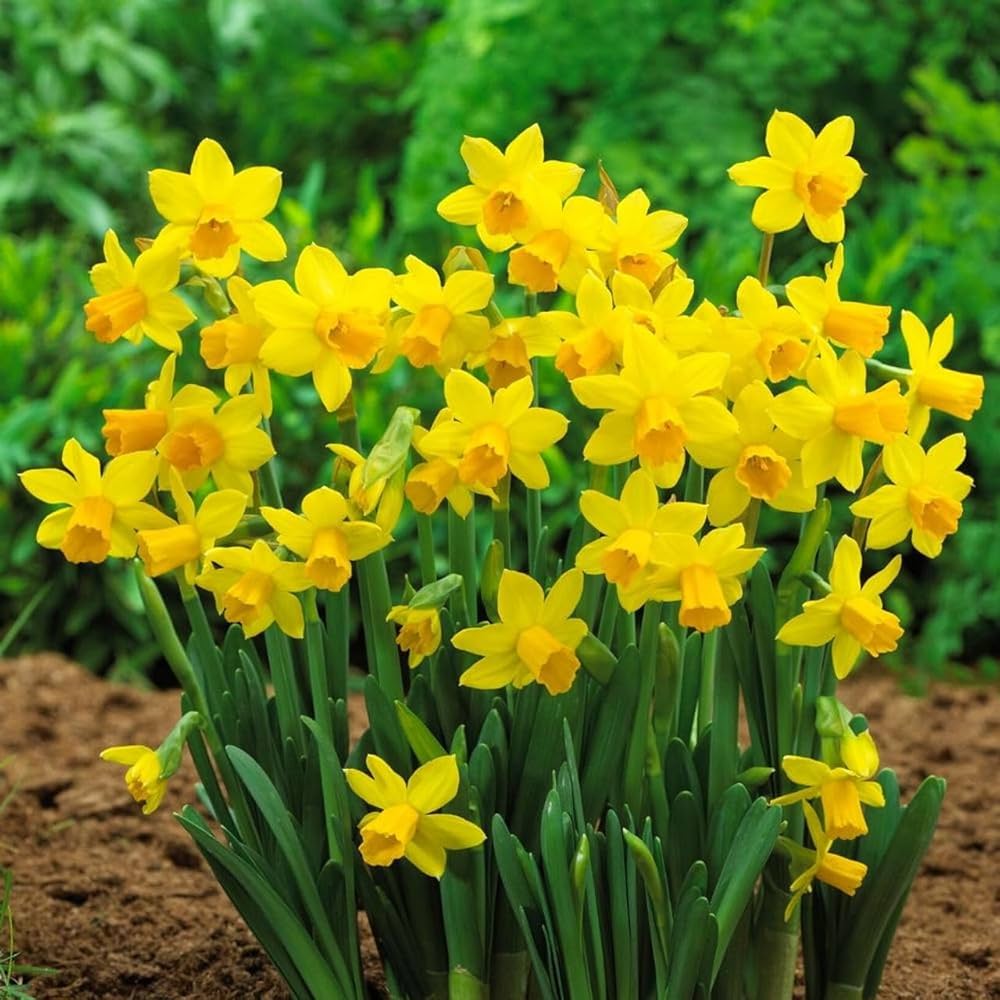Univalve Daffodil Flower Seeds (Narcissus pseudonarcissus) for Naturalizing and Garden Borders
Couldn't load pickup availability
Description
Univalve Daffodil Flower Seeds
Characteristics and Uses of Univalve Daffodil Plants
Univalve Daffodil, known for its elegant single blooms, is a charming perennial that brings a touch of spring beauty to any garden. These seeds produce stunning flowers with a distinctive trumpet shape, typically featuring a vibrant yellow or white color. Univalve Daffodils are perfect for naturalizing in garden beds, borders, and containers, providing a delightful display that attracts pollinators. With their easy care and ability to thrive in various conditions, these daffodils are ideal for both novice and experienced gardeners looking to enhance their outdoor spaces.
Growing Conditions for Univalve Daffodil Plants
- Light Requirements: Prefers full sun to partial shade, requiring at least 6 hours of direct sunlight each day.
- Soil Type: Thrives in well-draining, fertile soil enriched with organic matter for optimal growth.
- Temperature: Best suited for moderate temperatures, ideally between 50°F and 70°F for healthy growth.
Planting Tips for Univalve Daffodil
- Timing: Plant bulbs in the fall, about 6-8 weeks before the ground freezes, for spring blooms.
- Depth: Plant bulbs about 6 inches deep, with the pointed end facing upwards.
- Spacing: Space bulbs 4-6 inches apart to allow for proper air circulation and growth.
Watering Instructions and Tips
- Watering Frequency: Water regularly after planting, ensuring the soil is moist but not waterlogged.
- Mulching: Apply a layer of mulch around the base to help retain moisture and suppress weeds.
- Signs of Underwatering: Look for wilting leaves or dry soil as indicators that your plants need more water.
Growing Zones
Univalve Daffodil plants are well-suited for USDA zones 3-9 and can adapt to various global climates, making them a versatile choice for gardeners looking to cultivate these beautiful flowers.
Key Benefits & Uses
- Nutritional Value: While primarily ornamental, daffodil bulbs are sometimes used in traditional medicine.
- Pollinator Friendly: Attracts bees and butterflies, enhancing biodiversity in your garden.
- Long-Lasting Blooms: Provides stunning blooms in spring, adding vibrant color to your garden for weeks.
Best Uses in the Garden & Landscape
- Flower Beds: Ideal for planting in flower beds, adding height and color to your garden design.
- Container Gardening: Perfect for growing in pots or containers, making them suitable for patios and balconies.
- Naturalized Areas: Great for creating a naturalized garden that attracts wildlife and enhances the beauty of your landscape.
Conclusion
Univalve Daffodil seeds from bijaseeds are an excellent choice for gardeners looking to cultivate stunning and unique flowers. With their distinctive characteristics and numerous benefits, these seeds are perfect for enhancing any garden space. bijaseeds is a big, trusted name in the seed world, offering a wide range of high-quality, non-GMO varieties to gardeners everywhere.
FAQ
How do I grow Univalve Daffodils from seeds?
To grow Univalve Daffodils from seeds, start by planting the seeds in well-draining soil in a sunny location. Water regularly, allowing the soil to dry slightly between waterings for optimal growth.
When is the best time to plant Univalve Daffodil seeds?
The best time to plant Univalve Daffodil seeds is in the fall for spring blooms. Ensure the soil temperature is suitable for germination.
Are Univalve Daffodil plants difficult to grow?
Univalve Daffodil plants are relatively easy to grow, making them suitable for gardeners of all skill levels. With proper care, including adequate sunlight, watering, and spacing, they can thrive and produce a beautiful display of flowers.



